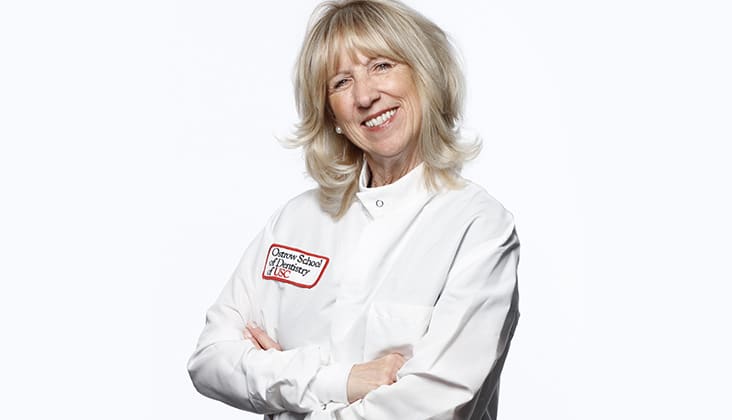
Reimagining Dental Hygiene Education
From trailblazing innovative teaching strategies to fostering interdisciplinary collaboration, this dental hygiene program director is not one to shy away from a challenge—even during a pandemic.
When she was just 8, Diane Melrose, RDH, BS, MA, watched her dad go through full-mouth extractions. She says experiences like this are what made her want to help people avoid dental problems.
After a high school summer job in a dental office, Melrose went on to earn a bachelor’s degree in dental hygiene from the University of Iowa in 1971. She honed her post-graduate clinical expertise in settings such as Baltimore’s John F. Kennedy Institute, Johns Hopkins Hospital, and in myriad public health facilities. Her first teaching appointment was at the University of Maryland in Baltimore.
Melrose continued to work in public health and rehabilitation when she moved to California in 1973. By 1976, she was teaching in the Dental Hygiene Program at the University of Southern California’s (USC) Herman Ostrow School of Dentistry in Los Angeles, becoming its director in 2000.
Melrose recently took time out to share her unique perspectives on dental hygiene education.
1. What kinds of changes has the dental hygiene program undergone during your tenure?
The biggest and most exciting change is the way we are teaching. When I first started, straight lecturing and testing seemed to work well. Now we need to be more interactive, using strategies that result in more critical thinking and self-pacing. We also reduced our class size to allow more collaboration with dental students and other healthcare providers. Working side by side in the clinic and classroom, students develop the critical skill of teamwork. But with COVID-19 and the new protocols, new strategies will have to be developed.
2. How is the coronavirus pandemic impacting the study of dental hygiene?
We’re not able to go into the clinic and classroom, so we’re frontloading the academic courses. When we go back there will be more time for clinical activities. Despite some challenges, with Zoom teaching and breakout rooms, we are able to give more personal guidance in some areas and schedule meetings more easily.
Another hurdle involves getting our recent graduates licensed. All programs have submitted a report to the Commission on Dental Accreditation to ensure we’re meeting its standards. We’re also working with the Dental Hygiene Board of California for acceptance of an alternative process for licensure that would not include a clinical exam on a live patient.
3. What kinds of challenges will newly minted dental hygienists face today when entering the workforce?
Understanding the new protocols for infection control, communication, and self-care are all big issues. Time management will also be critical due to the enhanced sterilization process of the operatories in between patients.
Communication with patients will be different due to the donning of more personal protective equipment. It will be more difficult to develop personal rapport—especially with kids, who may not be able to have their parents by their side. I also fear that dental disease will increase due to fear.
4. In your view, what will be the important issues in dental hygiene for this decade?
The most important issues will be finding safe and effective ways to continue to provide optimal preventive care. This opens up more research opportunities for our graduates. At this time, more focus will be on hand scaling until we can find effective ways to use ultrasonics safely. Teledentistry, intraoral photography, simulation labs, and collaboration are the future. But even with all of these challenges, after 51 years, I still love going to work every day—even on Zoom.

